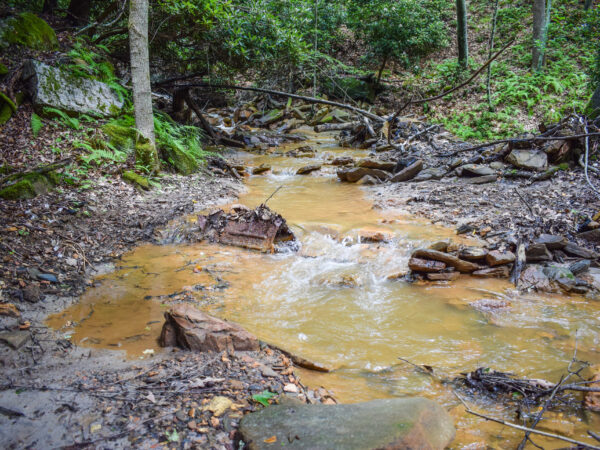
TOLEDO, Ohio (AP) — Political leaders and environmentalists who have spent years pushing Ohio to adopt a pollution diet to combat toxic algae blooms in Lake Erie say the state’s plan to do just that will fall short if there are no new regulations on farmers.
They contend that the only way the lake will meet federally mandated water quality standards is to add enforceable rules limiting two main sources of the phosphorus that feeds the algae — chemical fertilizers used on fields, and livestock manure.
Ohio’s Environmental Protection Agency announced last week it will establish what’s known as a “total maximum daily load” that imposes specific limits on how much phosphorus is allowed to flow into the lake’s western end.
While developing the plan will take two or three years, Ohio does not intend to add new regulations on farmers, nor does it have the authority to do so under the “total maximum daily load” designation, according to the state EPA.
What it plans to do is conduct a detailed review of pollution sources, set limits on targeted, local watersheds and come up with a strategy that will a follow a path outlined in Gov. Mike DeWine’s “H2Ohio” water quality initiative, which will begin offering farmers financial incentives this year to voluntarily adopt new agriculture practices.
Ohio’s agriculture leaders believe enough farmers will take steps to reduce their nutrient runoff so that tougher regulations won’t be needed to meet the state’s goal of drastically reducing the pollutants within five years.
Environmental organizations, including those behind a lawsuit seeking to force mandatory pollution rules for the lake, have cautiously applauded the state’s decision to set pollution limits.
“The devil will be in the details,” said Howard Learner, president of the Environmental Law & Policy Center. “Voluntary measures and incentives are not sufficient enough to solve the problems What is needed, in addition to those, are enforceable regulatory standards.”
That’s why his group’s lawsuit seeking increased pollution controls will continue, he said.
Creating new pollution limits through a “total maximum daily load” plan isn’t a cure-all and is just one tool the state is implementing to reduce the harmful nutrients going into the lake, said Heidi Griesmer, an EPA spokeswoman.
The agency described the plan as a road map for routes that can be used to improve water quality.
County commissioners in the Toledo area, which went without tap water for two days in 2014 after algal toxins contaminated the city’s supply, said this week that tougher regulations are needed for the plan to work.
“We believe strongly this has to have real teeth or we’re not going to make progress,” said Tina Skeldon Wozniak, a Lucas County commissioner. “If we don’t make progress, we’re going to lose the lake.”
Farm organizations in the state, which have vigorously fought attempts to regulate runoff, said they don’t think a “total maximum daily load” standard is needed.
But Adam Sharp, executive vice president of the Ohio Farm Bureau Federation, also had praise for the DeWine administration’s overall approach, saying “a state-driven process will be more effective than regulations coming from the federal level.”
Even if the state’s plan to set pollution limits doesn’t include new regulations, it could open the door for those down the road, said Frank Szollosi, who works on Great Lakes issues for the National Wildlife Federation.
If the state’s plan isn’t working, environmentalists could go back to court and ask a judge to enact and enforce regulations under the U.S. Clean Water Act, he said.
“For the first time it creates accountability. It means that sources of the nutrients will be held accountable,” he said. “Having that accountability is the game changer.”
Catch up on Great Lakes Now’s coverage of Lake Erie and its farm pollution problem:
Animal Culprit: Study Points to Animal Farms as Growing Contributors to Lake Erie Algae
Ohio wants to put Lake Erie on a new, strict pollution diet
H2Ohio: Ohio governor’s plan puts $1 billion toward clean water and new wetlands
API key not valid. Please pass a valid API key.Featured image: In this Sept. 15, 2017, file photo, algae floats on the surface of Lake Erie’s Maumee Bay in Oregon, Ohio. (AP Photo/Paul Sancya, File)




